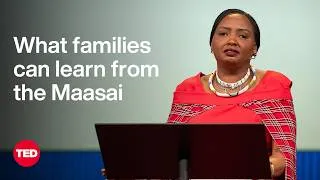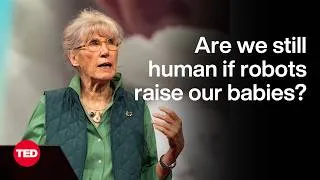请双击下面的英文字幕来播放视频。
翻译人员: Grace Man
校对人员: Yip Yan Yeung
00:06
The Black Death.
0
6919
1210
黑死病。
00:08
The 1918 Flu Pandemic.
1
8379
1835
1918 年流感大流行。
00:10
COVID-19.
2
10339
1168
2019 冠状病毒病
(COVID-19)。
00:11
We tend to think of these catastrophic,
world-changing pandemics
3
11883
3545
人们往往觉得这些改变世界的
灾难性疫情是极小概率事件。
00:15
as very unlikely events.
4
15428
2294
00:18
But between 1980 and 2020,
5
18389
2503
但是 1980 至 2020 年间,
00:20
at least three diseases emerged
that caused global pandemics.
6
20892
3837
至少出现了三次
造成全球性疫情的疾病。
00:24
COVID-19, yes, but also
the 2009 swine flu and HIV/AIDS.
7
24729
4921
没错,有 COVID-19,
还有 2009 年猪流感以及
艾滋病毒/艾滋病。
00:29
Disease outbreaks are surprisingly common.
8
29942
2378
疾病爆发普遍得令人吃惊。
00:32
Over the past four centuries,
9
32528
1544
在过去的四个世纪里,
00:34
the longest stretch of time
without a documented outbreak
10
34072
3128
没有任何致死量
超过一万人的疾病爆发记录
00:37
that killed at least 10,000 people
was just four years.
11
37200
4296
最长时间间隔仅为四年。
00:42
As bad as these smaller outbreaks are,
12
42038
2169
虽然这些小规模的疾病爆发很糟糕,
00:44
they’re far less deadly than
a COVID-19-level pandemic.
13
44207
3086
但是它们的致死率远低于
COVID-19 级别的疫情。
00:47
In fact, many people born after
the 1918 flu lived their entire lives
14
47627
4629
事实上,很多出生在
1918 年流感大流行以后的人,
00:52
without experiencing
a similar world-changing pandemic.
15
52256
3295
一生中都没遇到过类似级别的
足以改变世界程度的的疫情。
00:55
What’s the probability that you do, too?
16
55843
2253
那你遇到的概率是多大呢?
00:58
There are several ways
to answer this question.
17
58387
2253
可以从好几个角度回答这个问题。
01:00
You could look at history.
18
60640
1668
可以回顾历史。
01:02
A team of scientists and engineers
who took this approach
19
62308
2878
一组采用了该方法的
科学家与工程师
01:05
catalogued all documented epidemics
and pandemics between 1600 and 1950.
20
65186
5422
将 1600 年至 1950 年间所有
被记录的流行病与疫情分类统计。
01:10
They used that data to do two things.
21
70817
2085
他们用收集的数据做了两件事。
01:13
First, to graph the likelihood
that an outbreak of any size
22
73152
3587
首先,作图呈现不限规模的疾病
在一定时间段内
01:16
pops up somewhere in the world
over a set period of time.
23
76739
3128
在世界上某地爆发的可能性。
01:20
And second, to estimate the likelihood
that that outbreak would get large enough
24
80409
4171
第二,预测疾病爆发会扩大到
01:24
to kill a certain percentage
of the world's population.
25
84580
2753
导致一定比例的地球人口
死亡的可能性。
01:27
This graph shows that while huge
pandemics are unlikely,
26
87708
3629
从这幅图可以看出,
虽然大规模疫情是小概率事件,
01:31
they're not that unlikely.
27
91587
1627
但是可能性其实也没有那么小。
01:34
The team used these two distributions
to estimate that the risk
28
94048
2961
研究团队用上述方法估算
COVID-19 级别的疫情
01:37
of a COVID-19-level pandemic
is about 0.5% per year,
29
97009
4338
发生的风险概率大约为
每年 0.5% ,
01:41
and could be as high as 1.4%
30
101347
2711
如果新型疾病在未来
出现得愈加频繁,
01:44
if new diseases emerge
more frequently in the future.
31
104058
3087
那风险概率可高达 1.4% 。
01:48
And we’ll come back to those numbers,
32
108104
1793
我们之后会再回来讨论这些数字。
01:49
but first, let’s look at another way
to estimate the likelihood
33
109897
3045
现在,我们来看估测
未来疫情可能性的另一种方法:
01:52
of a future pandemic:
34
112942
1293
01:54
modeling one from the ground up.
35
114235
1877
从底层开始建立模型。
01:56
For most pandemics to happen, a pathogen,
which is a microbe that can cause disease,
36
116529
4296
对于大部分疫情来说,
发生的必要条件是
病原体,也就是
一种可以导致疾病的微生物,
02:00
has to spill over from its normal host by
making contact with and infecting a human.
37
120825
5547
需要接触人体并且感染人类,
以达到从正常宿主溢出的目的。
02:06
Then, the pathogen has to spread widely,
38
126497
2753
而后,病原体需要广泛蔓延,
02:09
crossing international boundaries
and infecting lots of people.
39
129250
3629
穿过国界与地域的限制,
感染很多人。
02:13
Many variables determine whether a given
spillover event becomes a pandemic.
40
133713
4588
很多变量决定了一个特定的溢出事件
是否最终会蔓延成为疫情。
02:18
For example, the type of pathogen,
how often humans come into close contact
41
138885
4296
例如,病原体种类,
人类与动物宿主
近距离接触的频繁程度,
02:23
with its animal reservoir,
existing immunity, and so on.
42
143181
3461
现有的免疫力,等等。
02:27
Viruses are prime candidates
to cause the next big pandemic.
43
147602
4087
病毒是导致下一次大疫情的
潜在罪魁祸首。
02:31
Scientists estimate that there are about
1.7 million as-yet-undiscovered viruses
44
151856
5756
科学家预计有 1700 万
尚未被发现的病毒
02:37
that currently infect mammals and birds,
45
157612
2544
正在感染着哺乳动物和鸟类,
02:40
and that roughly 40% of these have the
potential to spill over and infect humans.
46
160156
4921
这其中的 40% 有着
病毒溢出并感染人体的潜力。
02:46
A team of scientists built a model
using this information,
47
166162
2878
科学家团队进行建模分析,
输入模型的信息为病毒溢出概率
02:49
as well as data about the global
population, air travel networks,
48
169040
3461
以及以下数据:
全球人口,航空旅行网络,
02:52
how people move around in communities,
country preparedness levels,
49
172501
3504
人们在社区内的移动情况,
国家防灾备灾水平,
02:56
and how people might respond to pandemics.
50
176005
2419
人们针对疫情采取的应对措施。
02:58
The model generated hundreds of thousands
of virtual pandemics.
51
178799
3838
模型生成了成百上千种模拟疫情。
03:02
The scientists then used
this catalog to estimate
52
182720
2586
科学家用这个样本估测
03:05
that the probability of another
COVID-19-level pandemic
53
185306
3170
发生另一次 COVID-19 级别
疫情的概率为
03:08
is 2.5 to 3.3% per year.
54
188476
3253
每年 2.5% 至 3.3%。
03:12
To get a sense of how these risks
play out over a lifetime,
55
192563
3379
为了对这些概率在我们的一生中
会产生何种影响有更直观的认识,
03:15
let’s pick a value roughly in the middle
of all these estimates: 2%.
56
195942
3628
我们取一个这些概率
大约的中间值: 2% 。
03:19
Now let’s build what’s called
a probability tree diagram
57
199737
3003
现在画概率树状图
03:22
to model all possible scenarios.
58
202740
2336
来模拟所有可能的情形。
03:25
The first branch of the tree
represents the first year:
59
205243
3128
第一个分支代表第一年:
03:28
there’s a 2% probability of experiencing
a COVID-19-level pandemic,
60
208371
3920
COVID-19 级别的疫情
有 2% 的可能性发生,
03:32
which means there’s a 98% probability
of not experiencing one.
61
212500
3920
也就是说
有 98% 的可能性不会发生。
03:36
Second branch, same thing,
62
216712
1710
第二个分叉,情况相同。
03:38
Third branch, same.
63
218589
1335
第三个分叉,也是一样的。
03:39
And so on, 72 more times.
64
219924
2544
如此再继续 72 次。
03:42
There is only one path that results
in a fully pandemic-free lifetime:
65
222718
4922
只有一条路径通向
完全没有疫情的一生:
03:47
98%, or 0.98,
multiplied by itself 75 times,
66
227848
4880
98%, 或者是 0.98,
乘以它自己 75 次,
03:52
which comes out to roughly 22%.
67
232728
2503
结果大约为 22%。
03:55
So the likelihood of living through
at least one more COVID 19-level-pandemic
68
235856
4088
所以在接下来的 75 年,遇到
至少一次 COVID-19 级别疫情的
03:59
in the next 75 years
is 100 minus 22%, or 78%.
69
239944
5630
概率为 100% 减去 22%,
或者是 78% 。
04:05
78%!
70
245866
1127
78% !
04:07
If we use the most optimistic
yearly estimate— 0.5%—
71
247451
4171
如果我们使用最乐观的
全年估计 —— 0.5% ——
04:11
the lifetime probability drops to 31%.
72
251747
3128
那么一生中的可能性
降到了 31% 。
04:15
If we use the most pessimistic one,
it jumps to 92%.
73
255042
4129
如果我们使用最悲观的全年估计,
那结果大幅增长至 92% 。
04:19
Even 31% is too high to ignore;
74
259839
2669
即使是 31% ,
也大到了我们不能忽视的程度。
04:22
even if we get lucky,
future generations might not.
75
262633
3212
即使我们够幸运,
后代们未必足够幸运。
04:26
Also, pandemics are usually
random, independent events:
76
266053
3712
况且,疫情通常是
随机且独立的事件:
04:29
so even if the yearly probability
of a COVID-19-level pandemic is 1%,
77
269765
4797
所以即使 COVID-19 级别疫情的
全年可能性概率为 1% ,
04:34
we could absolutely get another
one in ten years.
78
274729
2836
我们在未来的十年内
也很有可能会再遇到一次。
04:38
The good news is we now have tools
that make pandemics less destructive.
79
278607
3963
好消息是我们现在已经拥有工具
使疫情带来的伤害没那么严重。
04:43
Scientists estimated that early warning
systems, contact tracing,
80
283154
3628
科学家们估计
早期预警系统、接触者追踪、
04:46
social distancing,
and other public health measures
81
286782
2461
保持社交距离
以及其他公共卫生措施
04:49
saved over a million lives
in just the first six months
82
289243
3253
仅仅在美国 COVID-19 疫情
发生的前六个月,
04:52
of the COVID-19 pandemic in the US,
83
292496
2419
就拯救了超过一百万人,
04:55
not to mention the millions
of lives saved by vaccines.
84
295333
3086
更不要说,还有疫苗
拯救了数百万条生命。
04:59
One day, another pandemic
will sweep the globe.
85
299587
2961
有朝一日,另一场疫情
会再次席卷全球。
05:02
But we can work to make that day
less likely to be tomorrow.
86
302840
3462
但我们可以努力让那一天不是明天。
05:06
We can reduce the risk
of spillover events,
87
306552
2252
我们可以降低病毒溢出事件
发生的风险,
05:08
and we can contain spillovers
that do happen
88
308804
2461
即使发生了病毒溢出,
我们也能有效遏制,
05:11
so they don’t become full-blown pandemics.
89
311265
2544
使其不会蔓延成为全面爆发的疫情。
05:14
Imagine how the future might
look if we interacted
90
314810
2461
想象一个这样的未来,
05:17
with the animal world more carefully,
91
317271
1919
人类与动物世界
接触得更加小心谨慎,
05:19
and if we had well-funded, open-access
global disease monitoring programs,
92
319190
4337
我们拥有资金充足的、开放式的
全球疾病监控项目,
05:23
AI-powered contact tracing
and isolation measures,
93
323527
2920
人工智能支持的
接触者追踪和隔离措施,
05:26
universal vaccines,
next-generation antiviral drugs,
94
326447
3295
通用的疫苗,
下一代抗病毒药物,
05:29
and other tech we haven't even thought of.
95
329742
2127
以及其他我们想象不到的科技。
05:32
It’s in our power to change
these probabilities.
96
332078
3003
相信我们有
改变这些可能性的力量。
05:35
So, we have a choice: we could do nothing
and hope we get lucky.
97
335206
3295
所以我们要做出选择:什么都不做,
祈祷我们足够幸运。
05:38
Or we could take the threat
seriously enough
98
338501
2252
或者足够重视这些威胁,
05:40
that it becomes a self-defeating prophecy.
99
340753
2419
让它们都成为不攻自破的预言。
05:43
Which future would you rather live in?
100
343672
1961
你更想活在什么样的未来里?
New videos
关于本网站
这个网站将向你介绍对学习英语有用的YouTube视频。你将看到来自世界各地的一流教师教授的英语课程。双击每个视频页面上显示的英文字幕,即可从那里播放视频。字幕会随着视频的播放而同步滚动。如果你有任何意见或要求,请使用此联系表与我们联系。







